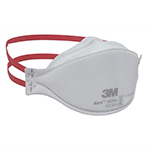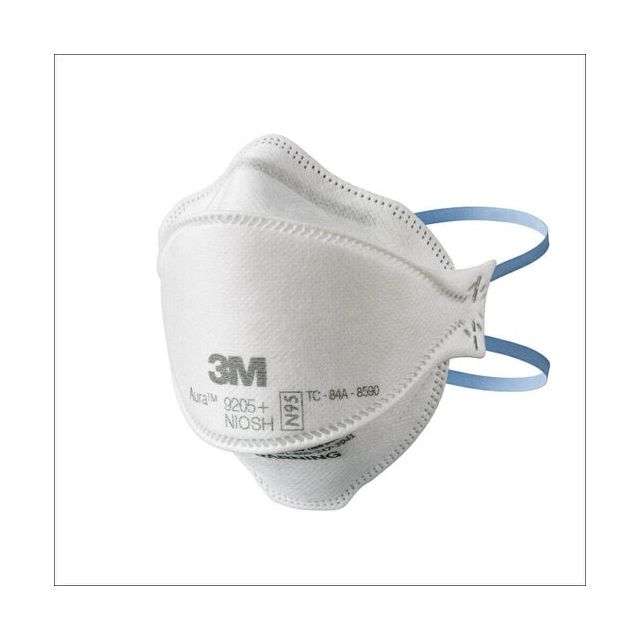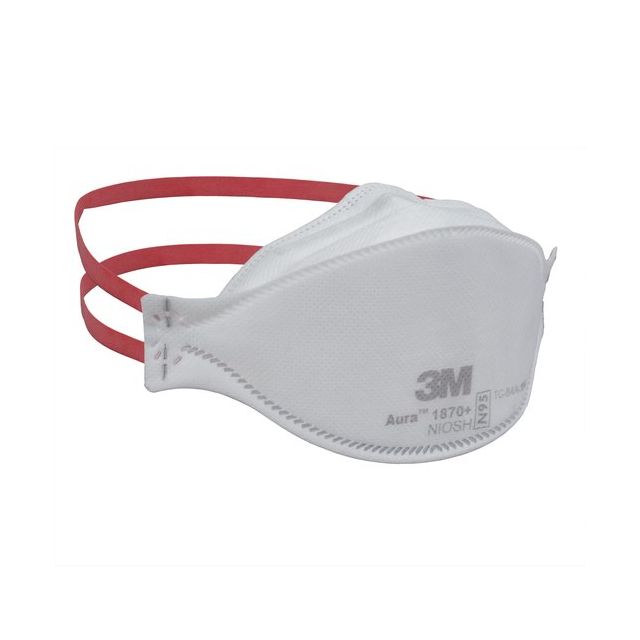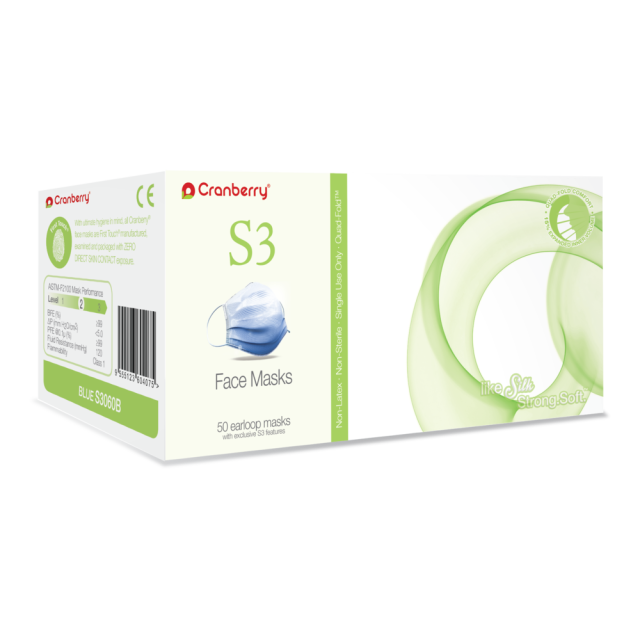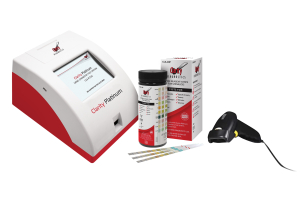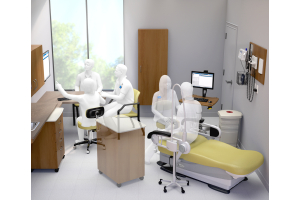An Updated Guide to Masks, Specs and Details
Every day, we get questions on masks – what are the differences, what’s important, what’s best, etc. These questions come from people across the range from personal use to medical practitioners.
Not just because of the Omicron variant now coming into play, but because we’re not quite out of the woods yet, this is a good time to get some of the details out there. And yes, we’re all hopeful that we can soon go back to not having masks nearby or on, and seeing them only in hospitals.
Definitions
There are two organizations that set the standards by which masks are specified.
- ASTM – formerly, the American Society for Testing and Materials, founded in 1902. They set standards used in many different areas, including for masks and filtration.
- NIOSH - the National Institute for Occupational Safety and Health, founded in 1970, is the United States federal agency responsible for conducting research and making recommendations for the prevention of work-related injury and illness.
Next, there are several specifications of masks:
ASTM Level 1, 2 & 3. These masks are typically ear-loop type. ASTM levels are determined by 5 factors, and are covered by ASTM F2100 specification:
- Bacterial Filtration Efficiency – bacterial particle filtration efficiency
- Differential Pressure – breathing resistance
- Sub-Micron Particulate Filtration – particulate filtration efficiency
- Resistance to Penetration by Synthetic Blood – synthetic blood (fluid) penetration resistance
- Flammability – specified in flammability Classes
NIOSH-Approved. These masks are typically head- and neck-band type. There are 7 classes of NIOSH-approved masks, with one variant. They filter a minimum of 95% of particles. The N, R, and P designations refer to the filter’s oil resistance as described here:
- N95 - Filters at least 95% of airborne particles. Not resistant to oil
- Surgical N95 - A NIOSH-approved N95 respirator that has also been cleared by the FDA as a surgical mask
- N99 - Filters at least 99% of airborne particles. Not resistant to oil
- N100 - Filters at least 99.97% of airborne particles. Not resistant to oil
- R95 - Filters at least 95% of airborne particles. Somewhat resistant to oil
- P95 - Filters at least 95% of airborne particles. Somewhat resistant to oil
- P99 - Filters at least 99% of airborne particles. Somewhat resistant to oil
- P100 - Filters at least 99.97% of airborne particles. Somewhat resistant to oil
Important and overlooked!
Next, let’s mention one of the most important aspects of wearing a mask - It’s not just what is filtered out by the mask, but how well it fits - that is - what goes around the mask and NOT through the filter. The second aspect is critical, because particles go around the sides, under the chin, etc and inside the protected area around your nose and mouth and into your lungs if it doesn’t fit or seal well to your face.
So it’s a matter of what gets around the filter and into your lungs. Everyone’s facial structure/shape is a bit different of course, and the mask has to fit your face.
In medical settings - hospitals, urgent care, etc, doctors, nurses and care professionals go through a “fit test”. This comes in the form of a kit that helps each individual user find the best-fitting mask model for their individual face. From then on, that’s the only model they wear, confident that it will work best for them. The fit test is done using these kits and by a trained professional.
While fit-testing isn’t practical for personal use - the cost, and need for training, make this a difficult proposition - there are several considerations that make this a bit easier to manage.
How is it held in place:
- Ear-loop masks - while some people consider these more comfortable, generally speaking, the ear-loops leave a wider gap around the cheeks and ears for unfiltered air to pass through. Ear-loop ASTM-levels 1-3, are generally less expensive
- Head- and neck-band - sometimes a bit more difficult to breathe through, since more of the air comes through the filter, and in some cases a bit less comfortable if the bands are too tight, these provide greater protection by better fit and therefore greater total filtration of air into your lungs. Head- and neck-band NIOSH N95, etc masks are generally more expensive
Mask shape:
While the ASTM ear-loop masks come in primarily the one - expandable, ear-loop - configuration, NIOSH N95’s come in several - almost all use the head- and neck-band straps to hold them in place. Please note that the terms used here are ours, and not “official” designations. We include them to give you an idea of what the variations are:
- Rigid cone: these masks have a rigid cone that covers the area right around nose and mouth. These can be difficult to wear for long periods of time, fit snugly which means better filtration, and will provide some space around the nose and mouth
- Semi-rigid cone: like the rigid cone, they use a cone that covers around the nose and mouth, however they’re made of softer materials and cover a slightly larger area than just the nose and mouth. This makes them slightly more comfortable for longer periods but still snug and providing some space inside
- Soft, full-lower-face: these masks are made of soft material and cover the full lower face from under-chin to over-nose, and From near-ear on both sides. These leave space around the nose and mouth and are flexible and therefore more form fitting. Because of this, they’re generally more comfortable for longer periods
- V-fold - like the soft, full-lower-face masks, these are soft, and cover a wider area than just over nose and mouth only. They come folded flat across the horizontal aspect of the mask. Easier to transport in some ways, they don’t provide as good coverage around the cheeks, nose and chin
Valves:
NIOSH N95 masks also come in two varieties - with and without a valve. The valve acts as the primary filtration point, and the rigid structure of the faceplate forces air to be pulled though the valve. These also have the added aspect of being a bit more difficult to breathe through, particularly if they’re worn for long periods of time
Where will they be worn:
While the idea of wearing a mask is for protection, fit and comfort come into play. If you’re wearing a mask in a spray-painting hood, for example, your needs are going to be different than going to the grocery store or on a long flight.
- In a casual, low-contact setting, for example, an ASTM Level 3 ear-loop mask may be sufficient. Maybe you’re going to an outdoor event where you’ll still be in close contact with people.
- If you’re going to be out going to the grocery store, or back in the office, or on a short flight but with some space around you, a soft, full-lower face N95 mask might be the most comfortable balance between protection and comfort.
- If you’re going to be on a long and crowded flight or in a closely packed environment indoors, perhaps a rigid or semi-rigid N95 might be your best bet.
In short, there are no rules: you can choose to wear the best protection within the realm of comfort. This may mean having several types of masks. In practice, most people choose a single, or perhaps two types of masks, and stick with those. Perhaps an ASTM Level 3 ear-loop and/or an N95 that they can wear most oof the time.
Recommendations:
Now that we’ve covered most aspects of masks and how to consider them, it’s time for our - clearly subjective - recommendations, based on our customers choices.
Since the choice of a mask is for protection, and hough we can provide ASTM Level 1 & 2, generally speaking, we don’t usually stock or recommend these. If you’re going to choose an ear-loop ASTM mask, we recommend an ASTM Level 3. The difference in cost is low to non-existent and the difference in moisture resistance from Level 2 to Level 3 makes this a better choice.
Since N95 is the standard these days, we stock several models of these. We typically don’t stock either R or P masks (although we can provide these if necessary), or the 99 for 100’s. In the case of the R and P models, these are typically for use in situations where oil resistance matters, and in the case of the 99 and 100 models, the higher filtration makes breathing more difficult.
Most users find the rigid and semi-rigid cone masks to be less comfortable. It also requires a good fit to your face so that your nose and mouth don’t feel pressed against around the edges. If you and a model that fits your face, then these can be a good choice, but they also require that they stay in place, since they’re more position-specific than other types.
The V-Folds are a good choice if you’re traveling, since they fold-flat, but because they also provide a little less coverage around the face, they can potentially have a detrimental effect in terms of seal.
The soft, full-lower-face masks are - far and away - the most popular, and we also feel, the best general choice for most wearers. They’re comfortable, provide an excellent seal for virtually all facial structures and shapes, leave space around the nose and mouth for breathing comfort, and still fold mostly flat when you take them off.
On this last type of mask, the difference between the surgical and non-surgical models is generally the inclusion of a stronger moisture barrier. While most users will not, of course, be using these in surgery, since they’d be provided by the medical institution where they’re used, it certainly doesn’t hurt to have this added moisture barrier and the cost is the same.
Length of use:
While there are no specs around this, we make the following careful recommendations:
- If you’re going to need to wear a mask all day or for extended length, bring at least two or more with you and switch them out every few hours. Masks are made of material - not metal of course - and the length of wear means more moisture from breathing passing through them as you exhale. By changing them out periodically, you minimize the hours of moisture and maximize their drying time, thereby minimizing the distending and misshaping effects of moisture on the filtration layer. This is similar to the idea of changing shoes each day to allow them to dry and recover their shape
- Over the past two years, we’ve all heard of hospital professional being forced (due to supply in the early days of the pandemic) to wear an N95 for a week at a time. In general, if you care for your mask by allowing it to dry, and keeping them clean, a mask can be work until it either starts to lose it’s shape, or appears dirty - sometimes a factor of where you are and therefore how much external “dirt” it picks up and filters out. But remember that the particles it’s filtering out are, of course, way too small to see and length of wear is really both a personal choice and dictated by how much “work” it’s had to do. Worn in a highly ventilated and clean environment, it does less “work” than in a lesser-ventilated environment. Again, no rules, here, more on the order of guidelines….
Some mask product options:
To make it a bit easier, here are some examples of each type of mask - the ones we typically stock - that might make your choice easier:
- For ASTM Level 3, Cranberry S3160B (most popular ASTM Level 3): Cranberry S3160B ASTM Level 3 Earloop Masks
- For N95 Semi-rigid Cone, 3M 1860 (most popular cone): 3M 1860 N95 Masks
- For the soft, full-lower-face masks, both the 3M 1870+ (most popular we sell): 3M 1870+ N95 Masks
- And the 3M 9205+ (our second most popular mask): 3M 9205+ N95 Masks
Additional Resourced for Information
Here are a few information resources we recommend:
- ASTM: ASTM Website
- NIOSH: NIOSH Website for N95 Masks
- NIOSH Guide to Respirator Selection: NIOSH Respirator Selection Website
- CDC Covid-19 Information: CDC Covid-19 Website
- State of Kansas ASTM Levels: State of Kansas Health Department PDF on Masks
- CNBC Article on Masks: CNBC Mask Article
Final thoughts:
We hope that whatever choice of mask you make, that the above is helpful information. If you have any thoughts, concerns, corrections, or suggestions on this blog post, please let us know. We want to be as accurate as possible, and provide both objective, and where noted, helpful subjective information for you to make an informed choice.
We’ve been around for over 43 years and focus on providing excellent customer service and competitive pricing in all areas of our medical and dental business.

